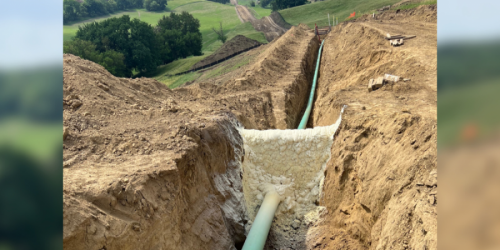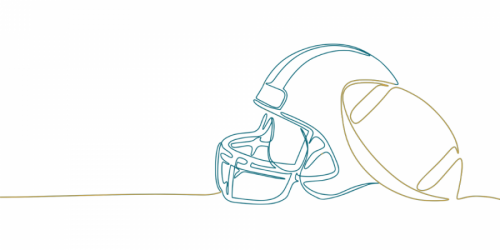Q&A Forums
Ignition Barrier Requirement Dates Post New Topic | Post Reply
| Author | Comments |
|---|---|
|
Trey Gibson
Posted: Sep 02, 2009 07:28 PM
|
Ignition Barrier Requirement Dates
I have heard different things from June 1st, 2010 to January 1st, 2010 to January 1st, 2011 but can anybody tell me and provide evidence of when the new code goes into effect of having to put an intumescent coating over exposed foam in attics and crawl spaces?Thanks in advance |
|
mason
Posted: Sep 03, 2009 08:18 AM
|
Foamer1. The code isn't changing rather the ICC Evaluation Services is changing the test procedure previously accepted by them (SWRI-99 to determine if a foam can be used without a prescriptive ignition barrier in attics and crawl spaces. But here is a portion of the meeting notes dated June 15, 2009 from the ICC ES meeting in Birmingham "1. Appendix B has been deleted. This completes the revisions approved in may 2008, which limited the time that testing under Appendix B would be accepted by ICC-ES. Further, By December 31, 2009 ICC-ES will revise all evaluation reports that are based on either a crawl space comparative test in which the baseline test was kraft-faced fiberglass, or a crawl space with the 3/12" conditions of acceptance to delete those sections of the evaluation report that are based on such testing. So according to my understanding of the meeting, the ICC ES reports that allow exposed foam in attics based on the SWRI-99 attic and crawl space test would be withdrawn by Dec 31, 2009. The whole meeting notes with the new approved acceptance criteria for sprayfoam can be obtained at the following address: www.icc-es.org/Criteria_Development/0906-post/AC377_combined.pdf |
|
jimcoler
I have over 10 years of experience specifying and installing open and closed cell spray foam. I've sold my business but I'm still selling for the new owners and consulting on large and custom specific jobs. I've expanded my knowledge into t Posted: Sep 03, 2009 10:02 PM
|
Dec 31, 2009 was the proposed date of implementation, but after much discussion at the ES Code hearing the final verdict was an implementation date of June 1, 2010 to allow the possibility of further testing. This is the fact and SPFA agreed after the meeting to continue the testing in an attempt to come up with a more realistic and practical test! When was the last time you were in an 8' high crawlspace with foam on the walls and ceiling? They call them basements in my neck of the woods but that's what the test was for both attics and crawlspaces. It would be nice if SPFA would live up to their commitment to continue this prusuit of more realistic testing but they don't have the big manufacturers motivating them to do so, so why would they? Again, I say get involved as your vote can make the difference if you attend the meetings and join the task forces. Jim Coler |
|
mason
Posted: Sep 04, 2009 07:22 AM
|
I will contact ICC ES and SPFA for clarification on the sunset dates for the evaluation reports based on the SWRI - 99 test procedure that uses kraft faced fiberglass. My information is based on two sources, ICC-ES report from that meeting and an article by SPFA on their website at sprayfoam.org (see link to article) www.sprayfoam.org/uploads/pages/4519/ICC-ES%20June09%20Outcome%20Summary%20Fnl.pdf The article on sprayfoam.org says. "As of June 1, 2009, ICC-ES will not longer accept test data based on the '3/12' interim criteria or Appendix B (per decision of the ICC-ES June 2008 hearing)" This included the SWRI test procedure As of December 31, 2009 ICC-ES evaluation reports that use test methods that are based on either a crawl space comparative test in which the baseline test was kraft-faced fiberglass or a crawlspace test with the "3/12" conditons of acceptance will be modified to delete the sections of the report that are based on this testing. On June 1, 2010, the testing requirements described in Section A1.2.2 will expire and the ICC-ES will no longer accept ESR applications using this test data after that date. ESRs written to this standard will be valid until December 31, 2010. All applicable evaluation reports will be revised by December 31, 2010 to delete assemblies based on this testing. " This test procedure they are describing in Section A1.2.2 is not the SWRI test procedure but rather is the newer test procedure that was just adopted. Here is the section as copied from the ICC ES website: " A1.2.1 (Option 1) For use on Walls or Floors of Attics or the Underside of Roof Decks of Attics: Tests shall be conducted in accordance with NFPA 286 with the conditions of acceptance specified in IBC Section 803.2; or UL 1715 or UBC Standard 26-3 with conditions of acceptance as specified in Section 3.3.3.2.3 of AC377. The tests must be conducted with the foam plastic installed at the maximum density and maximum thickness for which recognition is sought over the gypsum wallboard or glass-reinforced cement board, as described in the test standard. A1.2.1.1 Limitations: When testing is in accordance with Section A1.2.1, the evaluation report shall include the following limitations: a. Attic ventilation is provided when required by IBC Section 1203.2 or IRC Section R806, as applicable. b. Combustion air is provided in accordance with IMC Sections 701 and 703. c. The foam plastic insulation is limited to the maximum thickness and density tested. d. The installed coverage rate or thickness of coatings, if part of the insulation system, shall be equal to or greater than that which was tested. A1.2.2 (Option 2) For Use on Walls or Floors of Attics or the Underside of the Roof Deck of Attics: Comparative room corner fire tests shall be conducted in accordance with the test procedures of UBC Standard 26-3 or UL 1715 or NFPA 286. The foam plastic insulation shall be applied in the manner for which recognition is sought. The interior face of the control assembly shall consist of nominal 1/4-inch-thick, A-C or B-C plywood applied to the interior face of wood wall framing (plywood is permitted by UBC Section 2602.4, Exception 4, IBC Section 2603.4.1.6 and IRC Section R314.5.3 as a protective material for foam plastic located in attics.) The exterior face shall be covered with 3/8-inch-thick exterior plywood. The second test assembly shall be identical, but without plywood on the interior face of the wall. Conditions of acceptance shall consider the time-to-failure of the control test assembly, as evidenced by flashover, which is flame exiting the door opening. The second assembly with exposed foam plastic shall be tested for at least the same length of time. A successful comparison is based on no flashover of the second assembly within the time-to-failure of the control test assembly. A1.2.2.1 Limitations: When testing is in accordance with Section A1.2.2, the evaluation report shall include the following limitations: a. Entry to the attic is only to service utilities and no storage is permitted. b. There are no interconnected attic areas. c. Air in the attic is not circulated to other parts of the building. d. Attic ventilation is provided when required by IBC Section 1203.2 or IRC Section R806, as applicable. e. The foam plastic insulation is limited to the maximum thickness and density tested. f. Combustion air is provided in accordance with IMC Sections 701 and 703. g. The installed coverage rate or thickness of coatings, if part of the insulation system, shall be equal to or greater than that which was tested. |





























